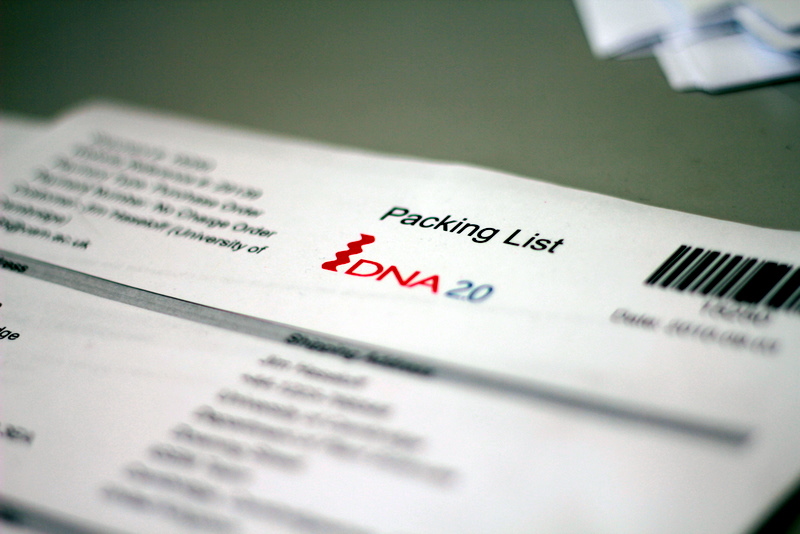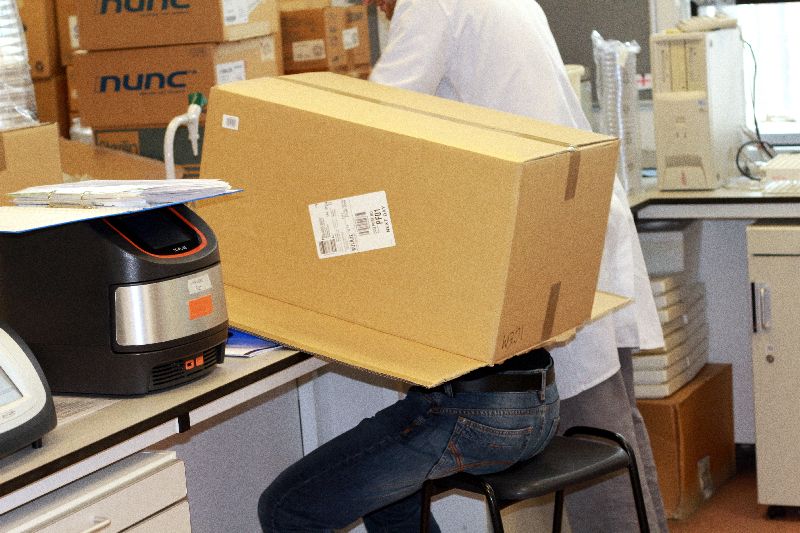Team:Cambridge/Notebook/9
From 2010.igem.org
(New page: {{Team:Cambridge/Templates/Day|Day=Monday}} {{:Team:Cambridge/Templates/rightpic|src=Cambridge-DNA20.jpg}} This morning was very exciting because both our orders from DNA2.0 had arrived. ...) |
|||
| Line 23: | Line 23: | ||
{{Team:Cambridge/Templates/Day|Day=Thursday}} | {{Team:Cambridge/Templates/Day|Day=Thursday}} | ||
| - | |||
| - | |||
| - | |||
| - | |||
| - | |||
==Friday== | ==Friday== | ||
| - | |||
| - | |||
| - | |||
==Saturday== | ==Saturday== | ||
==Sunday== | ==Sunday== | ||
| - | |||
<html> | <html> | ||
</div> | </div> | ||
</html> | </html> | ||
Revision as of 19:26, 8 September 2010
Contents |
Monday
This morning was very exciting because both our orders from DNA2.0 had arrived. These were the firefly operons, both containing both a luciferase and a luciferin regenerating enzyme. However we became incredibly paranoid, since the two tiny discs of filter paper were worth a great deal!
DNA 2.0 had supplied a protocol for extraction but we wanted to OK it with our advisors first and there was no-one in the lab, so we regretfully decided to leave extraction and transformation for Tuesday.
However we did see interesting results in that G28, an attempt Will had made to Gibson assemble the Vibrio fischeri lux operon into E. coli had glowed in the plate reader. Therefore Theo made up plates containing arabinose in LB with chloramphenicol and plated some out.
Tuesday
G28 had indeed been induced and glowed, see the pic on right - the first photograph of one of our finished BioBricks emitting light (since nothing else has been in pSB1C3). We still need to sequence it to show it is definitely correct. Today we also started a number of standard Biobrick assembly operations. We wanted to move the registry luciferase under a TetR promoter into pSB1C3 and also to add a fluorescent reporter to this operon, as well as G28. As such we performed a restriction digest, ran gels and performed gel extraction. We put this DNA in the freezer and turned our attention to our order from DNA 2.0. This was extracted from filter paper adding Tris-HCl and centrifuging. Then we transformed competent cells, we performed 4 transformations for each construct just in case, we plated them all out on kanamycin plates to select for the DNA 2.0 in house vector pJ207.
Wednesday
To our immense relief the DNA 2.0 transformations had indeed grown up! We prepared overnight cultures for BioBricking.
Also Paul continued in his attempts to extract the exisiting E. coli thioesterase gene from genomic DNA for BioBricking. Unfortunately the DNA was so faint that it was best visualised by putting a cardboard box over the transilluminator.
Theo ligated the fluorescent proteins onto the two operons, continuing Tuedays experiment and plated these out.
Thursday
Friday
Saturday
Sunday
 "
"


